
Tadrart Acacus: Libya's Ancient Desert Wonderland
Explore Tadrart Acacus in Libya, a UNESCO World Heritage site known for its stunning rock formations and ancient rock art, offering a unique blend of natural beauty and history.
Tadrart Acacus, located in the heart of the Sahara Desert in Libya, is a breathtaking blend of natural beauty and historical significance. This UNESCO World Heritage site is renowned for its stunning rock formations, which have been sculpted by the elements over millennia. Towering sandstone arches, vast dunes, and dramatic canyons create a landscape that feels almost otherworldly. The region is also home to an incredible array of prehistoric rock art, with paintings and carvings that date back over 12,000 years. These ancient artworks depict scenes of daily life, animals, and spiritual practices, providing a fascinating glimpse into the lives of the early inhabitants of the Sahara. Exploring these rock shelters and caves is like stepping back in time. Tadrart Acacus is not just a feast for the eyes but also offers a sense of adventure. Visitors can embark on guided treks or 4x4 expeditions to fully immerse themselves in this remote and rugged terrain. The clear desert skies also make it an ideal spot for stargazing, offering views of the Milky Way that are truly unforgettable.
Local tips in Tadrart Acacus
- Hire a local guide to navigate the desert safely and gain insights into the history and significance of the rock art.
- Visit during the cooler months between November and March to avoid the extreme heat of the summer.
- Bring plenty of water, sunscreen, and protective clothing to handle the harsh desert conditions.
- Consider a 4x4 tour to explore the more remote and rugged areas of Tadrart Acacus.
- Don't forget your camera – the unique landscape and ancient art provide countless photo opportunities.
Tadrart Acacus: Libya's Ancient Desert Wonderland
Tadrart Acacus, located in the heart of the Sahara Desert in Libya, is a breathtaking blend of natural beauty and historical significance. This UNESCO World Heritage site is renowned for its stunning rock formations, which have been sculpted by the elements over millennia. Towering sandstone arches, vast dunes, and dramatic canyons create a landscape that feels almost otherworldly. The region is also home to an incredible array of prehistoric rock art, with paintings and carvings that date back over 12,000 years. These ancient artworks depict scenes of daily life, animals, and spiritual practices, providing a fascinating glimpse into the lives of the early inhabitants of the Sahara. Exploring these rock shelters and caves is like stepping back in time. Tadrart Acacus is not just a feast for the eyes but also offers a sense of adventure. Visitors can embark on guided treks or 4x4 expeditions to fully immerse themselves in this remote and rugged terrain. The clear desert skies also make it an ideal spot for stargazing, offering views of the Milky Way that are truly unforgettable.
When is the best time to go to Tadrart Acacus?
Unmissable attractions to see
حديقة حي العروبة
Experience the tranquility of Hay Al-Arouba Park, a serene oasis in Ghat, Libya, perfect for relaxation and family outings amidst nature.
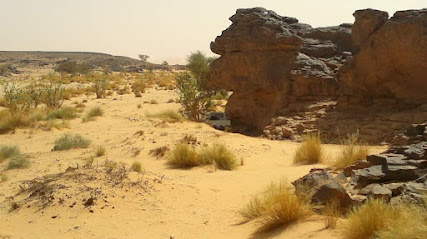
ساحة الوفاء البركت
Experience the vibrant community spirit and rich culture at Al Birkah's Al-Wafa Square, a lively hub of activity and local flavor.
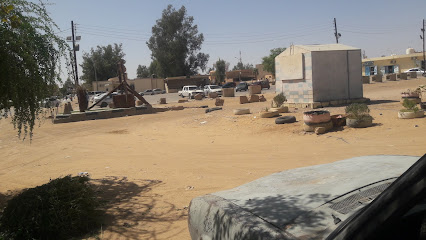
حديقة عامة
Discover the tranquil beauty of the Public Garden in al-Barkat, a lush haven for relaxation and nature appreciation.

قوس تنخليقة
Explore the historical grandeur of قوس تنخليقة, a captivating arch that embodies Libya's rich cultural heritage and architectural beauty.
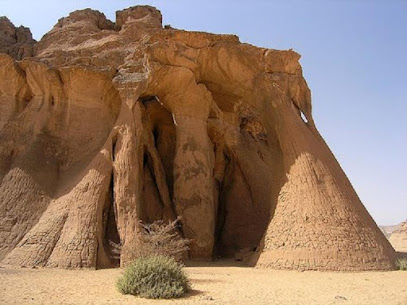
العوينات
Experience the breathtaking landscapes and rich cultural heritage of Aluyinat in Alawenat, a must-visit tourist attraction in Libya.
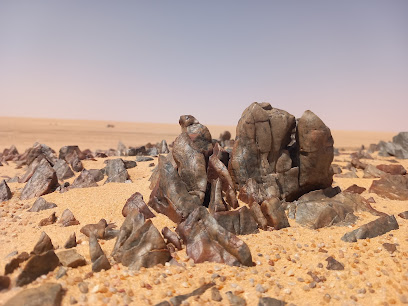
Akakus mountains سلسلة جبال أكاكوس
Discover the breathtaking beauty and ancient wonders of the Akakus Mountains, a UNESCO World Heritage site in Libya, perfect for adventurers and history lovers alike.
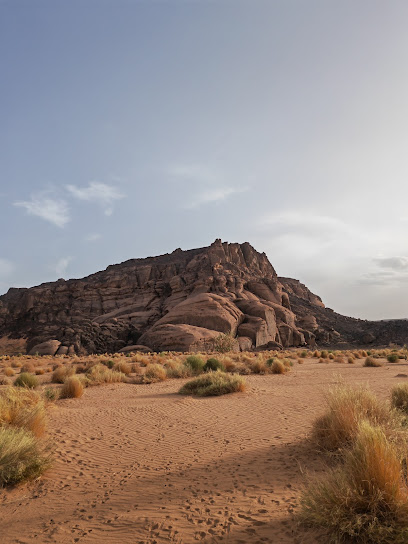
البئر الساخن
Explore the beauty and culture of Al-Bair Al-Sakhan, a captivating tourist attraction in Libya that offers a blend of history and nature.
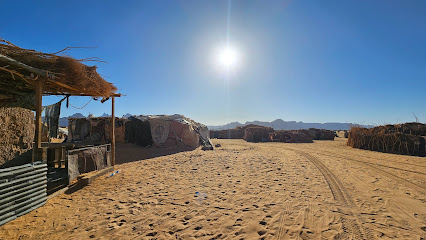
حديقة حي الزهور
Discover the serene beauty of حديقة حي الزهور in Ghat, a tranquil park perfect for relaxation and outdoor activities amidst lush greenery.

وادي تاشونت
Discover the serene beauty of Wadi Tashunt, Libya's hidden oasis, where nature and culture converge in breathtaking landscapes.

الغوطة
Experience the tranquil beauty of Al-Ghota, a serene park in Ghat, where nature and relaxation come together for an unforgettable getaway.
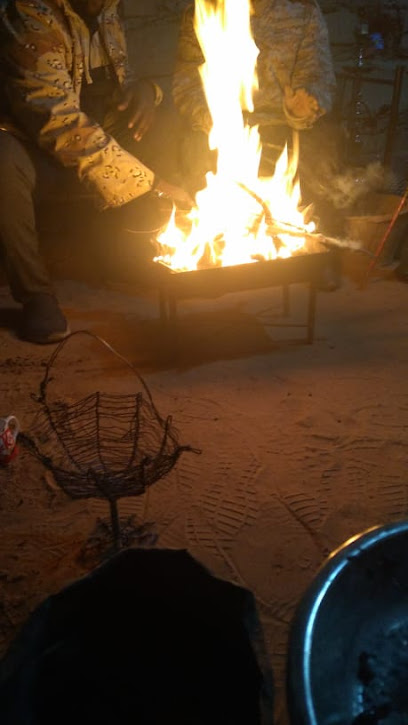
Wadi Awis وادي أويس
Discover Wadi Awis, a breathtaking valley in Libya, with stunning landscapes, unique rock formations, and a serene atmosphere perfect for nature lovers and adventurers.
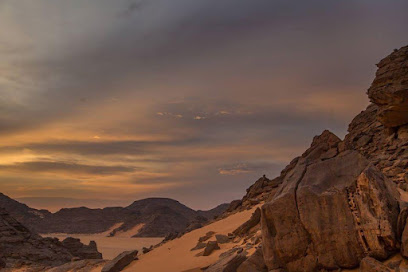
حديقة حي القلعة
Discover the serene beauty of the Garden of Hay al-Qal'ah in Ghat, a tranquil oasis filled with vibrant flora and lush greenery for a perfect escape.

الحديقة العامة
Discover the lush landscapes of Al-Hadiqa Al-Amma, a tranquil garden offering a perfect retreat for nature lovers and families alike.
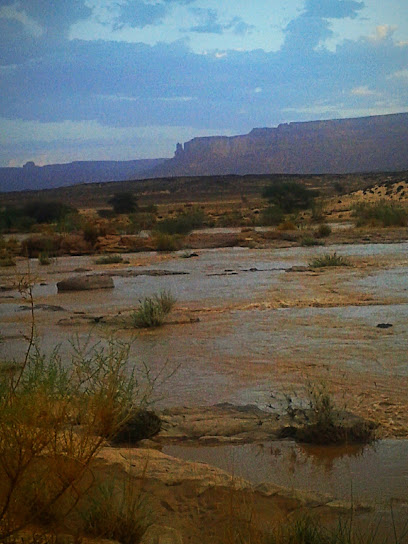
البركة
Explore the breathtaking landscapes and rich cultural heritage of El Bourka, a hidden gem in Djanet, Algeria, perfect for adventurous tourists.

حديقة الزهور
Experience the tranquility and beauty of Hadikat Al-Zahour, a serene park in Ghat, Libya, perfect for relaxation and nature exploration.

Markets, malls and hidden boutiques
Tadrart Acacus
Explore Tadrart Acacus, a breathtaking mountain range in Libya, known for its stunning landscapes and ancient rock art that tell stories of the past.
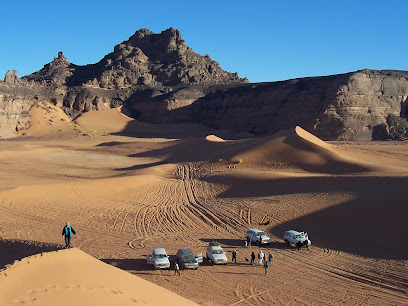
غات
Explore Ghat, Libya: A desert oasis of history, culture, and breathtaking landscapes awaits your discovery.

سوق المختار
Explore the vibrant produce market of سوق المختار in Ghat, where fresh flavors and local culture await every visitor.
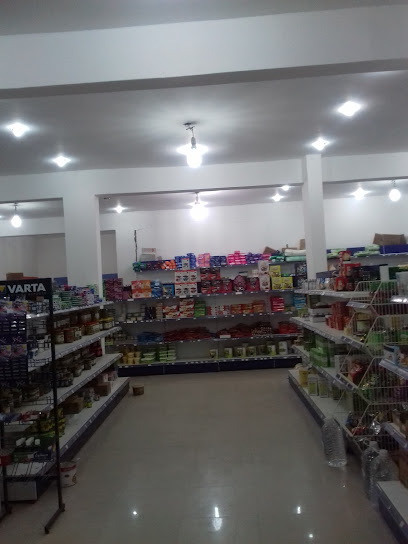
SOOMRAN SHOP
Explore SOOMRAN SHOP, a premier fashion accessories store in Tripoli, blending local craftsmanship with contemporary style.
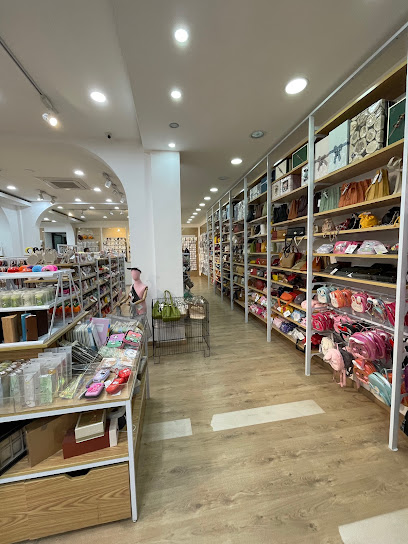
إنترستا للملابس الرجالية
Shop the latest trends in youth fashion at إنترستا للملابس الرجالية, a vibrant clothing store in Ghat known for its stylish apparel.

صاله الموعد للملابس النسائيه
Discover the latest trends in women's fashion at صاله الموعد للملابس النسائيه, a stylish clothing store in the heart of Ghat.
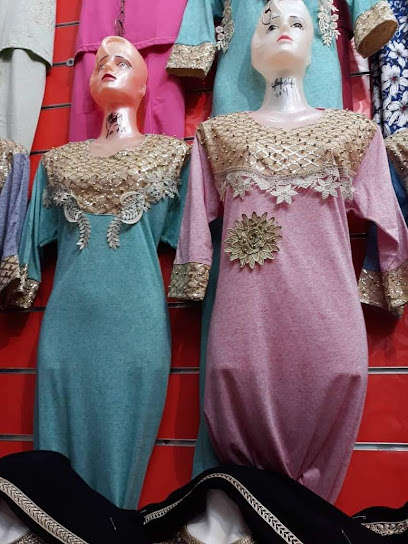
التواتي للمواد الغدائية
Explore authentic Libyan flavors at التواتي للمواد الغدائية in Ghat, your local grocery store for fresh produce and traditional ingredients.
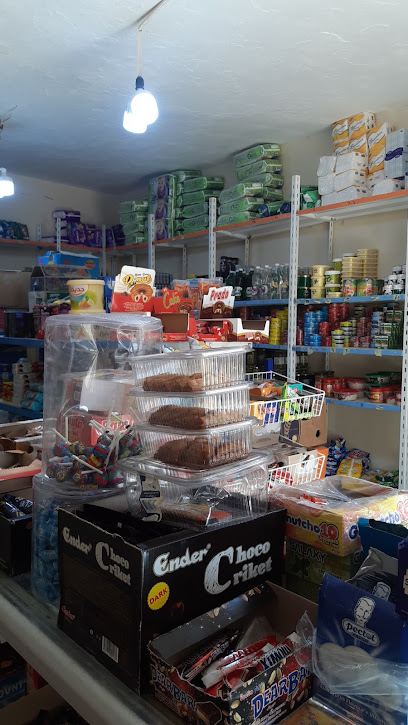
Alsrif market الشريف ماركيت
Explore Alsrif Market in Ghat, Libya - Your gateway to local flavors, fresh produce, and unique shopping experiences.
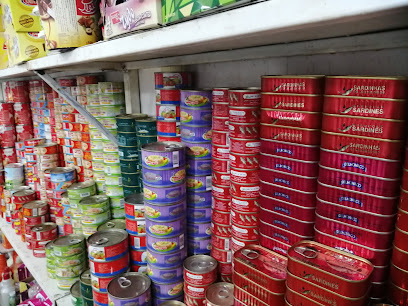
الوكيل للمواد المنزلية
Explore a treasure trove of household goods at الوكيل للمواد المنزلية in البركت, where local craftsmanship meets everyday needs.

سنتر العمارات
Explore سنتر العمارات, a vibrant produce market in Ghat, Libya, where fresh local produce meets rich cultural experiences.
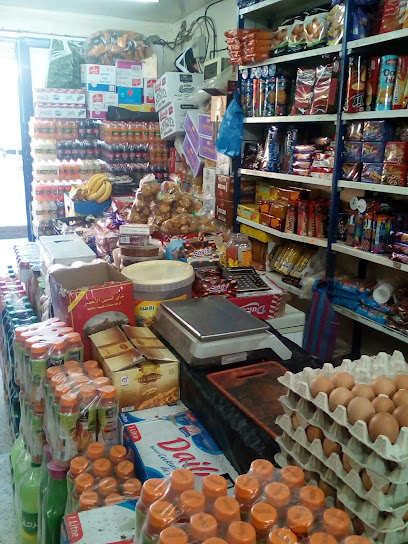
سوق المختار المجمع
Explore Ghat's bustling produce market for a taste of Libyan culture, fresh local produce, and an unforgettable shopping experience.

مركز المستقبل لبيع وصيانة الالكترونات
Explore cutting-edge technology and reliable repairs at Ghat's premier electronics store, مركز المستقبل لبيع وصيانة الالكترونات.
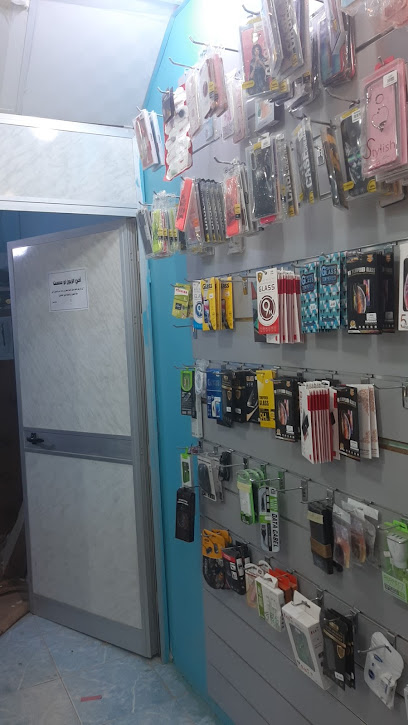
سوق ابناءوريث لمواد البناء
Discover the vibrant سوق ابناءوريث لمواد البناء in Ghat, where quality building materials meet local craftsmanship.

بروماكس للهاتف النقال بيع وشراء الأجهزة الالكترونية
Explore بروماكس للهاتف النقال in Ghat for the latest mobile devices and exceptional electronic gadgets, perfect for tech lovers and casual shoppers.

محل القيافه للزي العربي
Explore the exquisite world of traditional Arabic clothing at محل القيافه للزي العربي in Ghat, where culture and style meet.

Essential bars & hidden hideouts
Restaurant Elahh
Discover the flavors of Ghat at Restaurant Elahh, a delightful pizza haven offering locally sourced ingredients in a cozy atmosphere.

Warung Bakso Syafudin
Discover the authentic taste of Indonesia at Warung Bakso Syafudin in Ghat, serving delicious Bakso and traditional dishes in a vibrant setting.

كافي اتوت
Experience the authentic flavors of Libya at Café Atout, a delightful café in Ghat, perfect for relaxing and indulging in local cuisine.
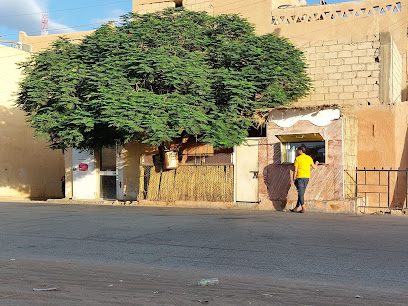
مطعم تاسيلي
Discover the rich flavors of Libyan cuisine at مطعم تاسيلي, a culinary gem in Ghat that delights with authentic dishes and warm hospitality.
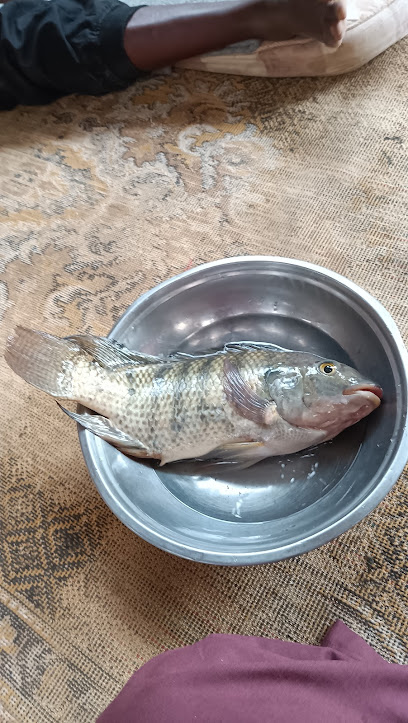
تندي للمشويات
Discover the authentic taste of Libyan grilled chicken at Tandi للمشويات in Ghat, where every dish is a celebration of flavor and tradition.

مطعم ميلانو للبيتزا
Savor authentic Italian flavors at مطعم ميلانو للبيتزا in Ghat, where each pizza is a culinary delight crafted with fresh ingredients.

مطعم أبناء ولافة للوجبات السريعة
Discover local flavors at مطعم أبناء ولافة للوجبات السريعة in البركت, offering delicious fast food in a casual and friendly environment.
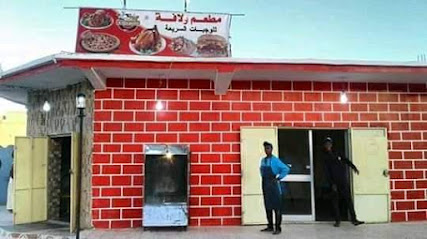
مطعم برهيم جابؤ
Discover the authentic flavors of Libyan cuisine at مطعم برهيم جابؤ, where every meal is a celebration of tradition and taste.

مطعم شيف
Experience the rich flavors of Libyan cuisine at مطعم شيف, a top-rated dining destination in البركت.
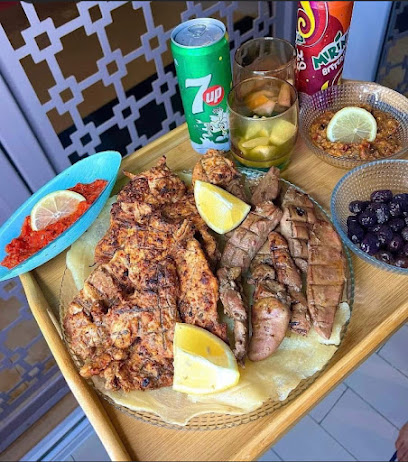
مطعم
Experience the authentic flavors of البركت at this charming restaurant, where every dish tells a story of local culinary traditions.

مطعم التهامي
Discover authentic Libyan cuisine at مطعم التهامي in Ghat, where every dish tells a story and every visit is a culinary adventure.

بتب ايتربقلاب
Discover the vibrant nightlife of Ghat at بتب ايتربقلاب, where refreshing drinks and local charm create unforgettable moments.

مطعم نصر
Discover the authentic taste of Libya at مطعم نصر, a delightful country food restaurant in Ghat, where tradition meets flavor.

مطعم ايهاب بيك للمشاوي والكباب
Savor the authentic taste of Libyan cuisine at مطعم ايهاب بيك للمشاوي والكباب, a must-visit destination in Al Birkah for grilled delights.

مطعم ايهاب بيك للمشاوي
Savor the authentic taste of Libyan grilled chicken at مطعم ايهاب بيك للمشاوي, a culinary treasure in Ghat offering a delightful dining experience.

Local Phrases about Tadrart Acacus
-
- Helloسلام
[salaam] - Goodbyeوداعا
[wadaa'an] - Yesنعم
[na'am] - Noلا
[laa] - Please/You're welcomeمن فضلك
[min fadlak] - Thank youشكرا
[shukran] - Excuse me/Sorryعذرا
[aathar] - How are you?كيف حالك؟
[kayfa haaluk?] - Fine. And you?بخير. وأنت؟
[bi khayr. wa ant?] - Do you speak English?هل تتحدث الإنجليزية؟
[hal tatahadath al'inglizia?] - I don't understandأنا لا أفهم
[ana la afham]
- Helloسلام
-
- I'd like to see the menu, pleaseأريد أن أرى القائمة، من فضلك
[uriid an araa alqaimah, min fadlak] - I don't eat meatأنا لا آكل اللحوم
[ana la aakul allahm] - Cheers!في صحتك!
[fi sahtak!] - I would like to pay, pleaseأريد أن أدفع، من فضلك
[uriid an adfa', min fadlak]
- I'd like to see the menu, pleaseأريد أن أرى القائمة، من فضلك
-
- Help!النجدة!
[alnajdah!] - Go away!ارحل!
[irhal!] - Call the Police!اتصل بالشرطة!
[atasil bialshurtah!] - Call a doctor!اتصل بالطبيب!
[atasil bialtabib!] - I'm lostلقد ضللت الطريق
[laqad dalalt altariq] - I'm illأنا مريض
[ana mareed]
- Help!النجدة!
-
- I'd like to buy...أريد أن أشتري...
[uriid an ashtari...] - I'm just lookingأنا فقط أنظر
[ana faqat anzur] - How much is it?كم ثمنها؟
[kam thamanha?] - That's too expensiveهذا غالي جدا
[hatha ghali jiddan] - Can you lower the price?هل يمكنك تخفيض السعر؟
[hal yumkinuk takhfid als'ar?]
- I'd like to buy...أريد أن أشتري...
-
- What time is it?كم الساعة؟
[kam alsaa'ah?] - It's one o'clockالساعة الواحدة
[alsaa'ah alwahidah] - Half past (10)نصف العاشرة
[nisf alaashirah] - Morningصباح
[sabah] - Afternoonمساء
[masa'] - Eveningمساء
[masa'] - Yesterdayالبارحة
[albarihah] - Todayاليوم
[alyawm] - Tomorrowغدا
[ghadan] - 1واحد
[wahid] - 2اثنان
[ithnan] - 3ثلاثة
[thalatha] - 4أربعة
[arba'a] - 5خمسة
[khamsa] - 6ستة
[sitta] - 7سبعة
[sab'a] - 8ثمانية
[thamania] - 9تسعة
[tasia] - 10عشرة
[ashara]
- What time is it?كم الساعة؟
-
- Where's a/the...?أين هو/هي...؟
[ayn huwa/hiya...?] - What's the address?ما هو العنوان؟
[ma huwa al'anaan?] - Can you show me (on the map)?هل يمكنك أن تريني (على الخريطة)؟
[hal yumkinuk an tureeni (ala alkhariitah)?] - When's the next (bus)?متى يأتي الحافلة القادمة؟
[mata yaati alhafilat alqadimah?] - A ticket (to ....)تذكرة (إلى...)
[tadhkirah (ila...)]
- Where's a/the...?أين هو/هي...؟
History of Tadrart Acacus
-
The Tadrart Acacus, located in the Sahara desert of southwestern Libya, is a stunning mountain range renowned for its dramatic landscapes and rich historical significance. The area is a UNESCO World Heritage site, recognized for its vast array of prehistoric rock art, which provides invaluable insight into the region's historical and cultural evolution.
-
Dating back to 12,000 BCE, the rock art of Tadrart Acacus is one of the most significant features of this region. The paintings and carvings depict a variety of scenes, including daily life, hunting, and ceremonial activities. These artworks provide a glimpse into the lives of the early inhabitants of the Sahara, illustrating the transition from a hunting-gathering society to one based on animal husbandry.
-
During the Neolithic period, around 10,000 BCE to 4,000 BCE, the Tadrart Acacus region experienced significant climatic changes, transforming from a lush, green environment to the arid desert it is today. This period saw the development of more sophisticated tools and pottery, as well as the domestication of animals. The rock art from this era often depicts cattle, which were central to the Neolithic economy.
-
The Garamantian civilization, which thrived between 500 BCE and 700 CE, left an indelible mark on the Tadrart Acacus region. The Garamantes were a powerful Saharan people who developed extensive trade networks and advanced irrigation systems, known as foggaras, to sustain their communities in the harsh desert environment. Evidence of their presence can be found in the form of ancient ruins, burial mounds, and inscriptions.
-
The Roman Empire extended its reach into the Tadrart Acacus region during the 1st century CE. Although the Romans never fully subdued the Garamantes, they engaged in trade and cultural exchanges. Roman influence is evident in some of the archaeological findings, including pottery and artifacts that reflect a blend of Roman and indigenous styles. This period highlights the interconnectedness of ancient civilizations across the Mediterranean and North Africa.
-
With the spread of Islam across North Africa in the 7th century CE, the Tadrart Acacus region became part of the broader Islamic cultural and trade networks. The influence of Islam brought new cultural practices, architectural styles, and religious beliefs to the area. Islamic traders and scholars traversed the Sahara, contributing to the rich tapestry of cultural exchange that characterizes the history of Tadrart Acacus.
-
In the 20th and 21st centuries, the Tadrart Acacus has attracted the attention of archaeologists, historians, and travelers from around the world. Modern scientific techniques, such as radiocarbon dating and digital imaging, have allowed for more precise documentation and analysis of the region's rock art and archaeological sites. These discoveries continue to shed light on the complex history of human occupation and adaptation in one of the world's most challenging environments.
Tadrart Acacus Essentials
-
Tadrart Acacus is located in the southwest region of Libya, near the Algerian border. The nearest international airport is Sabha Airport (SEB), approximately 550 kilometers away. From Sabha, you can arrange for a 4x4 vehicle with a local guide to take you to Tadrart Acacus. The journey by road takes around 10-12 hours, depending on weather and road conditions. Alternatively, you can fly into Tripoli International Airport and arrange a domestic flight to Sabha.
-
Given the remote location and rugged terrain of Tadrart Acacus, the most practical means of transportation is a 4x4 vehicle. It is highly recommended to hire a local guide who is familiar with the desert routes and can navigate the challenging landscape. There are no public transport options within the Tadrart Acacus region, so self-driving or guided tours are the only viable options. Ensure your vehicle is well-maintained and equipped with spare tires, fuel, and water.
-
The official currency in Libya is the Libyan Dinar (LYD). Credit card facilities are extremely limited, especially in remote areas like Tadrart Acacus, so it is essential to carry sufficient cash for your trip. ATMs are available in larger cities like Tripoli and Sabha, but not in the desert regions. It is advisable to exchange money in major cities before embarking on your journey.
-
While Tadrart Acacus is generally safe for tourists, it is crucial to be vigilant and take necessary precautions. Avoid traveling alone and always have a local guide with you. Be aware that the political situation in Libya can be volatile, and it is essential to stay updated on current advisories from your embassy. Avoid traveling at night and keep your belongings secure. There are no specific high-crime areas targeting tourists, but general caution is advised.
-
In case of an emergency, the best course of action is to contact your local guide who can assist you in reaching the nearest help. The emergency number in Libya is 193 for police and 120 for medical emergencies. Mobile phone coverage can be unreliable in the desert, so it is wise to carry a satellite phone. It is also recommended to have comprehensive travel insurance that covers medical evacuation. For minor health issues, carry a basic first-aid kit and necessary medications.
-
Fashion: Do dress conservatively, covering your shoulders and knees, to respect local customs. Avoid wearing revealing clothing. Religion: Do show respect for local traditions and avoid discussing sensitive topics like politics and religion. Public Transport: There is no public transport in Tadrart Acacus, so this is not applicable. Greetings: Do greet people with a handshake. It is polite to use your right hand. Eating & Drinking: Do accept food and drink offerings graciously. Don’t drink alcohol in public as it is prohibited.
-
To experience Tadrart Acacus like a local, engage with your guide and learn about the ancient rock art and the history of the region. Visiting during the cooler months (October to March) is recommended to avoid the extreme summer heat. Bring plenty of water, sun protection, and wear sturdy footwear. Try traditional Libyan cuisine if you get the chance and take the time to enjoy the stunning desert landscapes and starry nights.
Nearby Cities to Tadrart Acacus
-
Things To Do in Zliten
-
Things To Do in Tripoli
-
Things To Do in Leptis Magna
-
Things To Do in Misrata
-
Things To Do in Djerba
-
Things To Do in Tozeur
-
Things To Do in Sfax
-
Things To Do in Monastir
-
Things To Do in Sousse
-
Things To Do in Benghazi
-
Things To Do in Zurrieq
-
Things To Do in Mqabba
-
Things To Do in Hammamet
-
Things To Do in Rabat
-
Things To Do in Marsaxlokk







